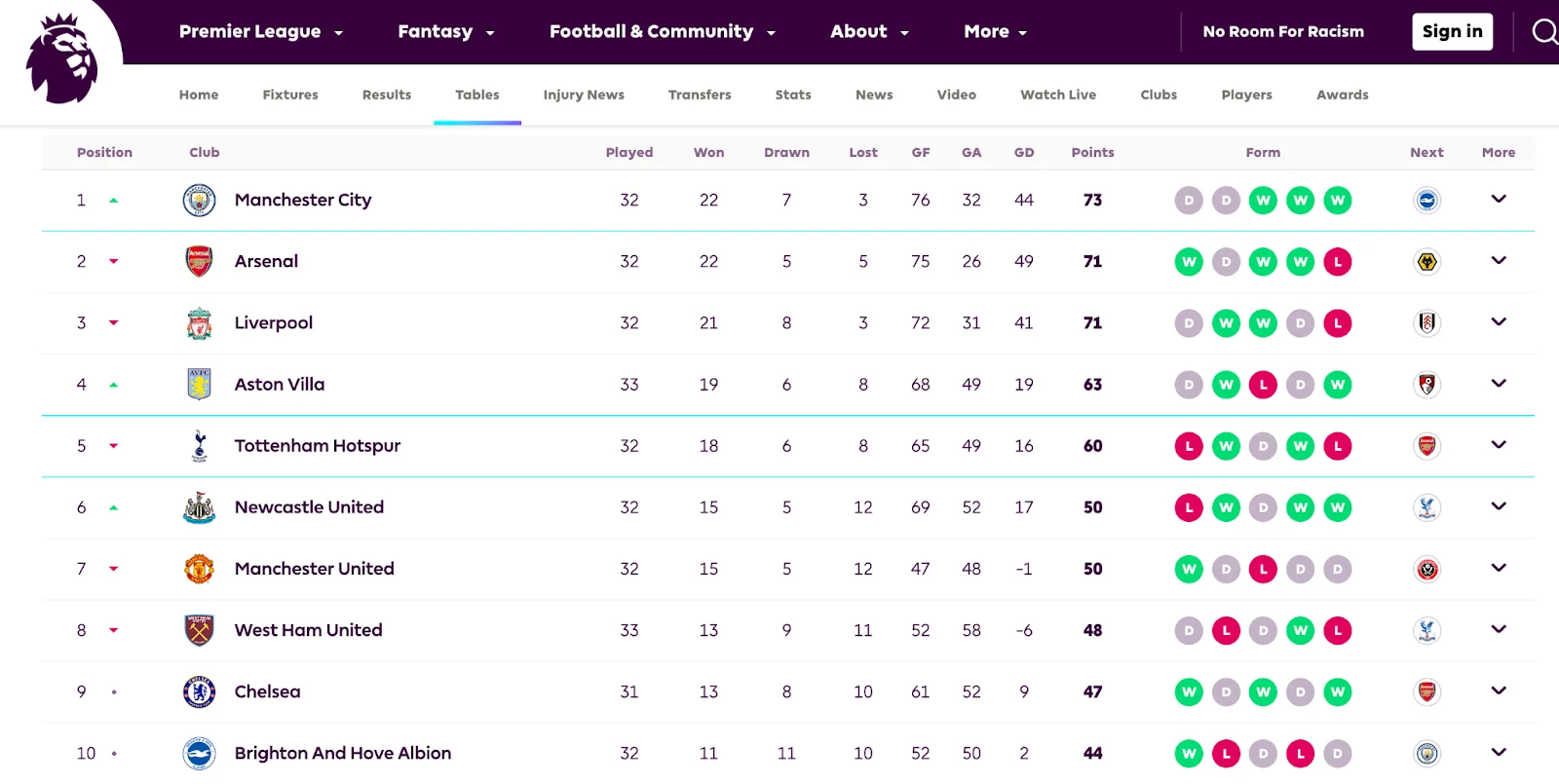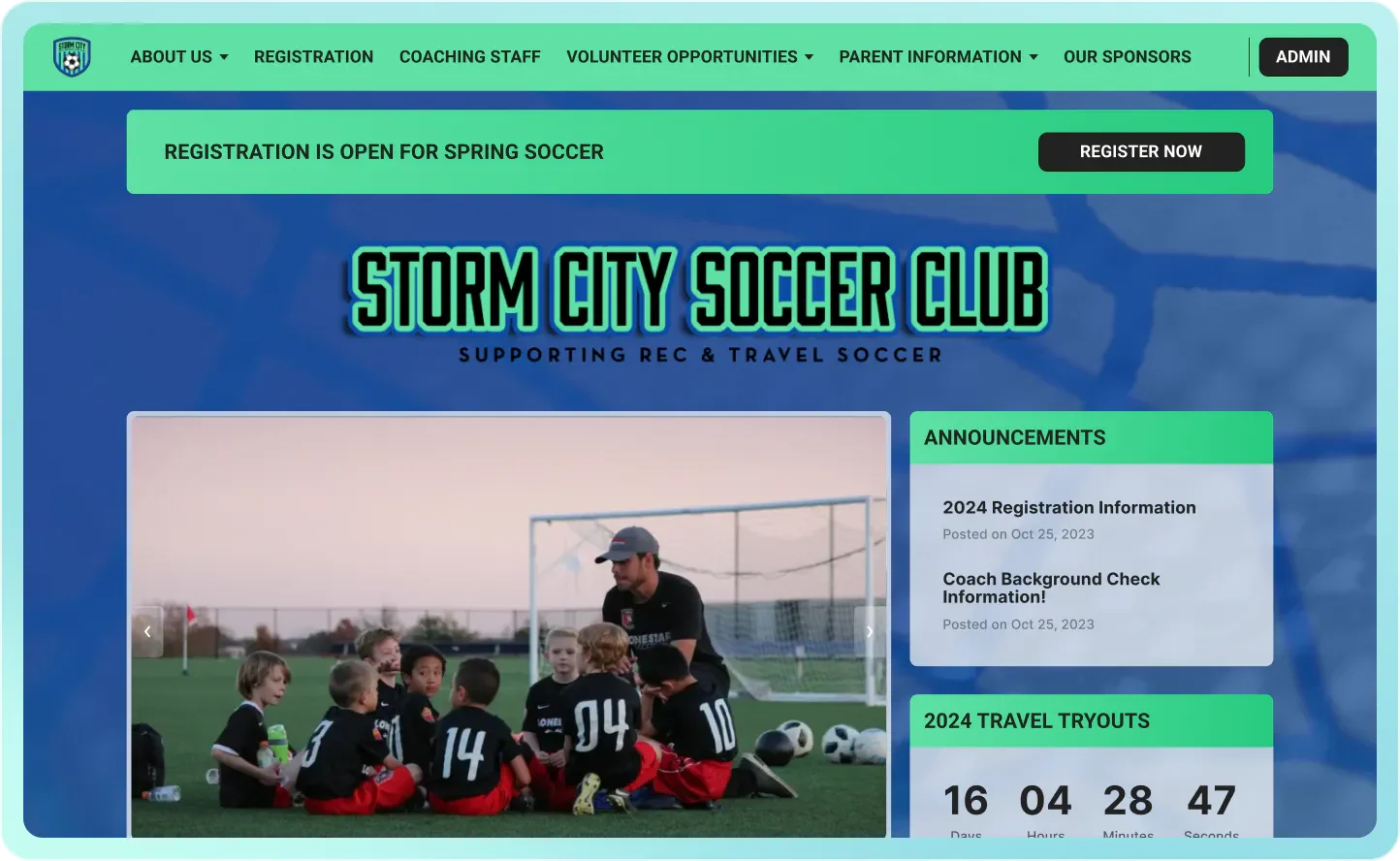
Table of Contents
Youth soccer participation has seen a sharp decline in the U.S., seeing a drop as high as 14% a few years ago. Much of this has to do with access to the sport, as the United States hasn’t always put as much of an emphasis on soccer as other countries around the globe have.
If soccer is important to you, and you want to improve access to the sport—especially amongst younger players—you might be looking to create a soccer league. This can help increase participation in your community and inspire others nearby to create their own leagues.
Follow along with our guide to create your own youth soccer league.
How to create a youth soccer league
Creating a youth soccer league is an exciting prospect. However, you need to take the necessary steps to smoothly launch the league and start signing kids up for practices.
Step 1: Define your vision and goals
When you’re first getting started, there are a lot of questions you need to ask yourself. This can help you shape the vision around your league before you even get started with the plans and the paperwork.
What is the purpose of your new league? Why do you want to create it? This can impact how to structure your league. Some of your goals/objectives may be:
- Promote community engagement
- Foster local talent
- Improve sportsmanship in your community
- Provide better access to soccer for local kids
- Teach the basics of a new sport to young people
- Advance players to higher levels of soccer
- Participate in travel club games around your region/state
Who is the league for? You’ll need to define specific age groups and skill levels. Starting out, you might only be able to provide teams for a couple of ages. But as your league grows, you may then be able to expand it for even more people and skill levels.
What will make your league stand out? If soccer is already prominent in your area, maybe you’re creating a more competitive league that offers better coaching for higher-skilled players. Or, you might simply be introducing soccer into an area that focuses on youth baseball or football.
How will you make your league stand out to increase participation, either amongst soccer players or people who play other sports?
Step 2: Plan the league
The next step is to fully flesh out your league’s functionality. This includes things like structure, time frame, league schedules, costs, etc.
First, let’s talk structure. How will you structure your game schedule? Will you have a tournament or playoffs at the end of the season? What will determine who makes it to the tournament?
There are a couple of different options here. Most soccer leagues use a point system. Throughout the season, each team plays each other twice, and the standings are based on this system.
If a team wins, they pick up three points to the losing team’s zero points. Teams that tie the game end up walking away with one point each. Take a look at England’s Premier League standings to get an idea of what this could look like:

Teams that tie in points are broken by their “goal difference,” denoted as “GD” in the above table. The Premier League consists of 20 teams, so its season lasts 38 games, whereas your youth soccer league will likely have a much smaller number of teams.
The Premier League, being a massive professional team, works on a promotion/relegation structure rather than having any type of playoffs or tournament.
The top four teams play in an all-star Champion’s League against the top teams from other European leagues. The fifth-place team plays in another league against the next set of top teams. The bottom two teams are relegated to a lower-level league.
The Major League Soccer (MLS) league in the United States, however, heads to the playoffs at the end of a season. Your youth league may decide to do something similar by ending the season with a tournament.
You can use a points system throughout the season to determine which teams make it to the playoffs (i.e., the top half of teams), or you can use a round-robin structure before you head to the knockout stages.
The FIFA World Cup uses round-robin structuring. Teams are separated into groups, and the teams in each group play each other.
From there, the winners of each group will head to the knockout stages. In the knockout stages, a team is knocked out of the tournament in each stage until your soccer tournament has its winning team.
Once you’ve decided on your league’s structure, you need to determine your league’s start and end dates, how often matches will be held, and other important dates.
Most youth soccer leagues are held during the spring or fall season. So, for example, you could open online registration towards the end of summer for a league start date in September. Schedule practices for a month or so before your games, then create a game schedule so that each team has 1-2 games each week.
Keep holidays and other community events in mind when building out your sports calendar. You’ll need to allow for breaks—i.e., Thanksgiving break—that line up with the local school and holiday calendar.
And finally, outline any expected costs and revenue sources. This can help you reasonably plan out your expenses and even get a loan to get started if need be.
Expected costs may include:
- League registration fees
- Permits and licensing
- Insurance
- Venue/facility rentals
- Referees and other staff
- Equipment
However, potential revenue sources that can offset those costs may include:
- Sponsorships
- Registration fees
- Merchandise
Once you’ve finalized these plans, you can move on to the next step.
Step 3: Work out the logistics
Now it’s time to work out logistics. Run through this checklist as you start to get your league set up.
- Secure locations for games. Is there a community park or field available that you can rent and secure time with? Will you need to utilize multiple locations? Consider factors like accessibility, capacity, and playing surface quality as you search.
- Choose the right sports management software. Sports management tools can help you properly manage your league, providing tools like a soccer schedule maker, a league table, registration tools, a league website, and more.
- Set up your registration process. Consider using a sports registration software to provide online soccer registration for your participants. Set criteria for team entries, provide registration information on your own soccer website, and create deadlines for when registration ends.
- Get the equipment you need. One of the first upfront costs of your league will be getting necessary equipment—soccer goals, field paint, cones, balls, pinnies, etc.—so you can provide each of your coaches with a starter kit and ensure they’re ready for practices.
- Find staff and volunteers. Many coaches and other staff will be volunteers, but you’ll still need to run background checks to ensure they’re qualified.
- Put together the essential paperwork. This includes your registration form, necessary waivers, and other documents that you’ll need referees, coaches, parents, and perhaps even players to sign.
Step 4: Work on marketing and branding
Once you’ve set up your soccer/football league, you need to work on marketing to generate enough participants to fully flesh out each team. The first step is to work on branding. A strong league brand will more easily garner attention and participation.
The very first step is creating a catchy league name. Little League is a popular youth baseball league. Consider other league names—both youth and professional—to help come up with yours.
Well-known soccer leagues include:
- Premier League (England)
- Bundesliga (Germany)
- La Liga (Spain)
- Serie A (Italy)
- Ligue 1 (France)
- Pro League (Belgium)
- Super League (Switzerland)
- Primera Liga (Portugal)
- Major League Soccer (United States)
Consider creating a league name that plays on one of those national leagues. You can also then derive your team names from that league’s existing teams to further the bit.
From there, you’ll also need to develop a league identity that appeals to your target audience. This includes things like a logo, motto/tagline, apparel, and any other identifying factors.
Next, you’ll want to create your own soccer league website. You can use a sports website builder like Jersey watch to help you get started with a template.

You can then customize that template with your own league name, logo, colors, and informative web pages, like the Storm City Soccer Club does above.
From there, you can create social media pages for your league, garner local press to feature you and participate in community events to attract teams, sponsors, and spectators.
Step 5: Get sponsors
Next, identify potential sponsors by offering value through branding opportunities on kits, banners, and digital platforms. Securing youth soccer sponsorships are a key way to generate revenue for your league and can help spread the word about your league.
Create a sponsorship package that’s appealing to local businesses. This can include placements like:
- Banners around your fields
- Ads on your website
- Team shirts
You can also conduct some of your own outreach amongst companies that like to sponsor local leagues as another way to find new sponsors. Getting sponsors can help you get the capital you need to really get your league up and running.
Step 6: Consider operations
Finally, make sure your league is ready to fully operate. Get your staff and volunteers on the same page and ready to kick off their roles.
Create a comprehensive schedule that considers team preferences and venue availability. Plan logistics for game days, including team check-ins, emergency procedures, and crowd control.
Find the right communication tools so that your league officials can easily communicate with coaches. Recommend communication tools for coaches to communicate with players and families.
Get everything ready so that all you have to do is open registration, build out teams, and start the season.
Set up your soccer league for success
Creating a soccer league is a great way to increase access to the sport, improve community engagement, and help train young players in a brand new sport. Jersey Watch can be the perfect partner for your sports management needs, helping you set your soccer league up for success.
Create a soccer league FAQ
Can you start your own soccer league?
Absolutely! It takes hard work and dedication—as well as some community interest and support—but you can absolutely start your own soccer league.
How do sports leagues work?
Sports leagues work by offering registration to interested participants. They then divide those participants up into teams, create a game schedule for all teams, and ensure proper coaching throughout the season.
How do sports leagues make money?
Most sports leagues make money through registration fees, sponsorships, fundraising, and team merchandise.